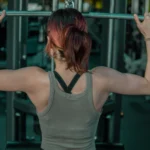From the realm of physical fitness, few names have had as lasting an impact as Joseph Pilates. Born in Germany in the late 19th century, Pilates took his childhood health struggles as a springboard, propelling himself into becoming a respected fitness guru. He developed a revolutionary fitness technique that he named after himself, which is now embraced worldwide.
His method emphasizes the balanced development of the body, focusing on core strength, flexibility, and awareness to support efficient, graceful movements. The Pilates method remains a testament to the man’s dedication, creativity, and undying passion for fitness.
Early Life and Health Struggles
Joseph Pilates was born into humble beginnings near Düsseldorf, Germany, in 1883. His early life was not a walk in the park, and he quickly became acquainted with the harsh realities of health struggles. As a child, he battled a trio of ailments that would’ve daunted even the sturdiest of souls. He had asthma, a respiratory condition that often left him gasping for breath. Rickets, a bone disorder due to a lack of vitamin D or calcium, distorted his skeletal frame. And if that wasn’t enough, he also had to contend with rheumatic fever, a disease that could damage the heart.
It’s hard to imagine that a boy who was often bedridden and wracked with such illnesses would later become a fitness icon. But that’s the magic of the Pilates story. These early health challenges did not deter him. Instead, they ignited a spark in him, a fiery determination to overcome his physical limitations and attain robust health. These formative experiences in his early years would later lay the groundwork for the development of the Pilates method. Indeed, every cloud has a silver lining, and in Pilates’ case, it was a silver lining that would benefit millions worldwide.
Journey to Fitness Expertise
Joseph Pilates was not one to be held down by his ailments. His journey to fitness was both a testament to his resilience and a daring dance with destiny. To conquer his health issues, he turned to physical exercise with a vengeance. He started immersing himself in various forms of exercise, and before long, he was excelling as a gymnast, diver, and skier. These were no mean feats for a boy who had once been a prisoner to his own frail body.
In 1912, Pilates’ path took him to England, an adventure that would further shape his journey. Over there, he wore many hats, each of them contributing to his understanding and shaping of physical fitness. He showcased his athletic prowess as a circus performer, stunning audiences with his strength and agility. He also put his strength to the test as a boxer, sparring with opponents who honed his grit and determination.
But perhaps most notably, he served as a self-defense instructor at Scotland Yard, the headquarters of the Metropolitan Police in London. This role allowed him to deepen his understanding of the body’s mechanics, strength, and flexibility. It was during this period that he began to see the contours of his fitness philosophy taking shape. He was beginning to understand that true physical fitness was more than just muscles and brute strength; it was about holistic well-being, a balance of mind, body, and spirit. This realization was the cornerstone upon which the Pilates method was eventually built.
World War I and the Development of Pilates Method
As World War I erupted, Joseph Pilates found himself in an unexpected predicament. Being a German national living in England, he was interned alongside other Germans as an “enemy alien.” Rather than succumbing to despair, Pilates seized this as an opportunity to further refine his understanding of the human body and physical fitness.
While interned, he began developing his physical fitness technique, now known as the Pilates method. He observed his fellow internees and started designing exercises to help them cope with the hardships of internment, both physically and mentally. His approach was holistic, focusing on controlled movements, core strength, and mind-body connection. It was during this time that the Pilates method started to take shape, literally behind the barbed wires of an internment camp.
The true test of his innovative method came when he was transferred to another camp on the Isle of Man. At this new location, Pilates worked in a hospital with patients unable to walk. He realized he could utilize the springs from hospital beds to create resistance exercise equipment for bedridden patients. This idea was a precursor to the specialized Pilates equipment we know today.
By attaching springs to the hospital beds, he enabled patients to exercise their muscles while lying down. The results were nothing short of miraculous. Even in the midst of the flu pandemic that swept through the camp, it was reported that none of Pilates’ trainees succumbed to the illness. This was a testament to the effectiveness of his method, a spark of hope and strength amid the grim backdrop of war. This episode marked a significant milestone in Pilates’ journey, solidifying his belief in the transformative power of physical fitness.
Pilates in America
Following the end of the war, Pilates eventually found his way to America. In 1926, he and his wife Clara, whom he met on the ship to the United States, established the first Pilates studio in New York City. It was in the hustle and bustle of the Big Apple that Pilates’ unique method began to gain traction.
Their studio attracted a diverse clientele, from dancers and athletes to business executives and housewives. The Pilates method, with its focus on core strength, flexibility, and mindful movement, appealed to many. It was not just a workout; it was a complete approach to physical wellness that transcended the boundaries of conventional fitness training.
Clara, a nurse by profession, played a pivotal role in the development and teaching of the Pilates method. She brought a nurturing touch to the studio, refining the exercises to meet the unique needs of each client. Her empathy and understanding of the human body complemented Joseph’s technical expertise, making their studio a beacon of holistic health and wellness.
Together, Joseph and Clara worked tirelessly, advocating for their method and transforming lives along the way. The Pilates studio in New York City became a hub of transformation, a place where people discovered their strength, unlocked their potential, and learned to move with grace and ease. The journey that began in a wartime internment camp had now blossomed into a full-fledged fitness movement in the heart of America.
Contributions to Fitness Literature and Equipment
Beyond his studio, Pilates’ contributions to the field of fitness extended to literature and equipment. He authored two seminal works that articulated his fitness philosophy and method: “Return to Life through Contrology” and “Your Health.” These books demystified his approach to exercise, introducing the broader public to the benefits of controlled, mindful movement. They remain highly regarded texts in the world of fitness, providing deep insights into the Pilates method.
Pilates was not just a fitness guru; he was also an inventor. He held an astonishing 26 patents for exercise apparatus designed to support and enhance his fitness method. His inventions, such as the Reformer, the Cadillac, and the Wunda Chair, are fixtures in Pilates studios worldwide. These innovative apparatus, often equipped with springs for resistance, allowed for a variety of exercises to be performed that targeted different muscle groups and catered to various levels of fitness.
These inventions revolutionized the way people exercised. They reflected Pilates’ deep understanding of the human body and his vision of fitness as a harmonious interaction between mind and body. His written works and inventions have left an indelible mark on the fitness landscape, cementing his place as a pioneer in the field.
Legacy and Death
Until his last breath, Joseph Pilates remained a passionate advocate for his method. He believed in the power of physical fitness to transform lives, and he dedicated his life to spreading this message. His work continues to resonate in the countless Pilates studios worldwide and the millions who practice his method.
Pilates’ extraordinary journey came to an end in 1967 in New York City. He passed away due to advanced emphysema, a condition likely linked to his early life struggles with asthma. Despite his passing, his legacy endures. His vision of holistic fitness continues to inspire, motivate, and transform people all over the globe.









